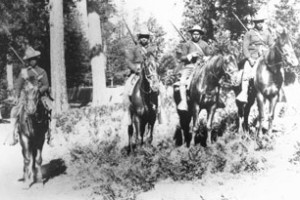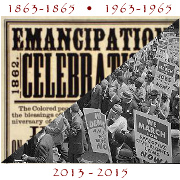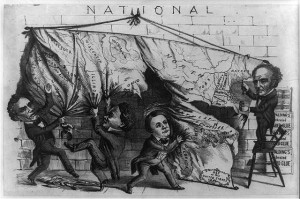Buffalo Soldiers in the National Parks Study Act
Posted June 19th, 2013 by James DeWolf PerryCategory: Public History Tags: Buffalo Soldiers, Jim Crow, National Park Service, U.S. Army
 On Monday, the U.S. House of Representatives passed H.R. 520, the “Buffalo Soldiers in the National Parks Study Act,” which would study ways for the National Park Service to commemorate these black troops and their historic role in the post-Civil War era.
On Monday, the U.S. House of Representatives passed H.R. 520, the “Buffalo Soldiers in the National Parks Study Act,” which would study ways for the National Park Service to commemorate these black troops and their historic role in the post-Civil War era.
The history of the Buffalo Soldiers
The Buffalo Soldiers were U.S. Army troops who, as the bill puts it, “served in many critical roles in the western United States, including protecting some of the first National Parks” in the Sierra Nevada. Their origins date to 1866, when Congress authorized the creation of all-black Army regiments: the 24th and 25th infantry regiments and the 9th and 10th cavalry regiments. The soldiers who enlisted were primarily southerners leaving behind sharply limited economic opportunities for black citizens in the Jim Crow South. The Buffalo Soldiers performed many duties in the West, including service in the Spanish-American and Indian Wars and patrolling large territories to maintain law and order.



